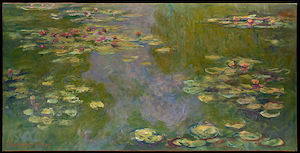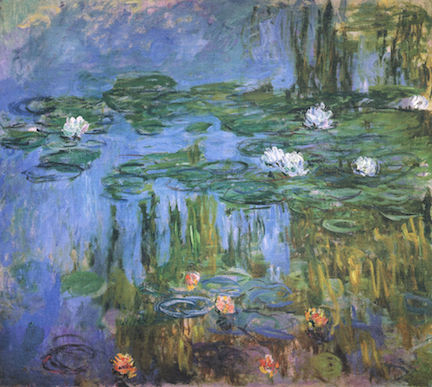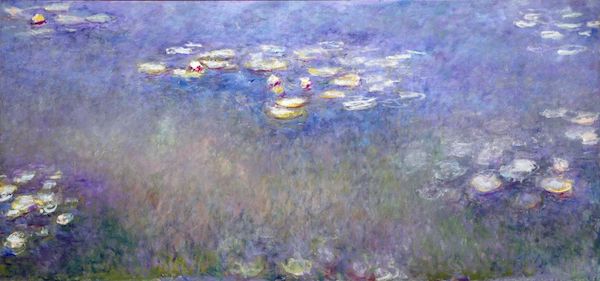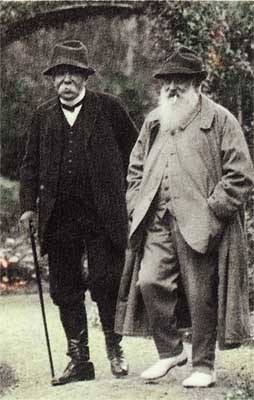
Water Lilies, 1916, Claude Monet.

Water Lilies Nympheas, ca. 1916, Claude Monet.

Later Career
Ceux de Chez Nous (Those of Our Land), 1915, Sacha Guitry.
Claude Monet painting in Giverny.
Monet’s career skyrocketed in the 1880s. He was recognized as the founder of Impressionism and the driving force for the struggling style. His perseverance impressed critics and the public.
"Colors pursue me like a constant worry. They even worry me in my sleep."
~Claude Monet, ca. 1900

Water Lilies, 1916, Claude Monet.

Water Lilies Nympheas, ca. 1916, Claude Monet.

Water Lilies, 1915, Claude Monet.

Water Lilies Agapanthus, 1914-1917, Claude Monet.
Monet was emotionally taxed by the onset of WWI. Feeling dissatisfied with his work, he fell into depression. He burned 500 paintings. Despite everything, he continued to paint. In retirement, he painted a collection of 250 pictures of his garden entitled Water Lilies.
“The way he phrased things to his wife with candor, we see his frustration toward not being able to get the painting right and his dissatisfaction. Monet was understanding clearly not just painting landmarks and natural terrain, but the atmosphere and emotional response of the artist.”
~Angelica Daneo, Denver Art Museum, Curator of European Art Before 1900, 2019

George Clemenceau and Claude Monet, 1921, Musee Clemenceau.

Claude Monet's Funeral, 1926, Bibliotheque Nationale de France.
Monet's Death
Claude Monet continued painting until his death on December 5, 1926. At the funeral in Giverny, George Clemenceau, former French Prime Minister, replaced the black cloth on the casket with a colorful one to honor his friend.
“Aside from painting and gardening, I’m good for nothing.”
~Monet, 1904
Header Images: "Impression Sunrise", 1872, Claude Monet; "Water Lillies", 1906, Claude Monet; "Woman with a Parasol - Madame Monet and Her Son", 1875, Claude Monet; "The Cliff Walk at Pourville", 1882, Claude Monet.